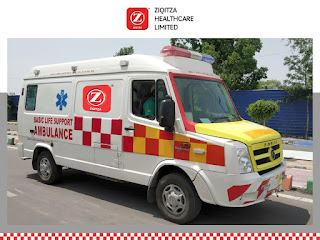Ziqitza - ASHA: The changing face of Malaria control
India’s female community health workers, most
commonly referred as ASHA (Accredited Social Health Activists) workers, are one
of the largest community-based health workforce in the world. India currently
has over 9 Lakh ASHAs. The ASHA scheme is currently active in 33 states except
for the states of Goa, Chandigarh & Puducherry. Ziqitza
Healthcare, one of the
nation's leading healthcare institutions, states that each ASHA worker on an
average supports 1000 people and is responsible for their access to public
health services. Ziqitza,
charts out that in most states in India, ASHA volunteers receive
performance-based financial compensation for providing specific tasks such as
immunisation, referring expecting mothers or pregnant women to health centres
etc. Other responsibilities of the ASHA workers include activities such as,
sensitising the community about new health initiatives, bridging the gap
between the community and the health systems, spreading awareness about
infectious diseases such as tuberculosis etc. They even support the auxiliary
nurse midwives in delivering and child-care related services.
India fights many diseases which are major health
problems and malaria is one of them. Malaria is a huge public health nuisance,
especially in rural and tribal areas of the country. Ziqitza
Healthcare ltd, points out scientific evidence that 80% of malaria
cases in South East Asia Regional (SEAR) countries are reported from India. The
National Vector Borne Disease Control Programme (NVBDCP), aims to eliminate
malaria by the year 2030 and has launched a framework for the same. The
National Health Mission, focuses especially on eight States in India that have
low public health indicators and infrastructure to tackle Malaria - Bihar,
Jharkhand, Madhya Pradesh, Chhattisgarh, Uttar Pradesh, Uttaranchal, Odisha and
Rajasthan. Under the aegis of National Health Mission, one ASHA worker is
assigned for every 1000 people, which roughly translates to the population of
one village. Ziqitza
Rajasthan, further clarifies that these ASHA workers are appointed from
the village itself and are trained to work as the bridge and interface between
the public health system and the community.
Ziqitza Limited, adds to Ziqitza
Limited Rajasthan’s statement and explains that ASHA workers also act
as health promoters in their communities and themselves undergo extensive
training to their job role which requires them to perform tasks related to
immunisation, family planning, Maternal and Child Health, and disease
preventions - malaria and tuberculosis. Considering ASHA workers' advantageous
position and their close proximity to the local community, they are involved in
diagnosis and treatment of Malaria on a daily basis. An ASHA worker screens suspected malaria
cases using Rapid Diagnostic Test (RDT) kits and blood slides and administers
complete treatment as per the national drug policy.
The Indian Council of Medical Research (ICMR),
Government of Madhya Pradesh, in partnership with many medical and
pharmaceutical companies hasformed the Malaria Elimination Demonstration
Project (MEDP), a unique and first of its kind public-private-partnership. The
MEDP’s goal is to apply the learning from successful elimination of malaria
from 1233 villages of Mandla district, to the rest of Madhya Pradesh and other
states of the country.
ZHL
Rajasthan, points out that
MEDP was successful in eliminating malaria from 1233 villages of the Mandela
district in Madhya Pradesh because the programme engaged ASHAs in their
response strategies and effectively used them in malaria control measures,
which included activities like awareness camps, diagnosis and treatment as
well.
A similar success story can be traced in Odisha.
From 4,36,850 malaria cases in Odisha in 2015, to 66,301 cases in 2018, Odisha
reported 85 percent reduction in malaria cases. The National Vector-Borne
Disease Control Programme, credited the success of this to ASHA workers. Ziqitza
Health care limited, explains how Odisha achieved it. The State adopted
a three-step project to control the spread of malaria. These steps were
executed by 47,147 ASHAs. As the first step, ASHAs test any case of fever for
malaria - so that treatment is met early and the parasite is killed before
mosquitoes spread it. Second, as part of a programme -DAMAN — DuragamaAnchala
Re Malaria Nirakaran, run by the Odisha state, the entire population had to
undergo malaria tests, irrespective whether they had symptoms or not. The
Odisha government also used indoor residual spray method, in which residual
insecticide was applied to inner walls and ceilings of the houses. Third, the
state government also distributed around 1.1 crore long-lasting insecticide
nets (LLINs) to combat malaria exposure during sleep. ASHA workers went to each
house explaining the benefits of the net’s use.
The role of ASHA workers in combating malaria is
unparalleled, they’re the communities first wall of defence and the bridge that
connects the communities to the public health system.




Comments
Post a Comment